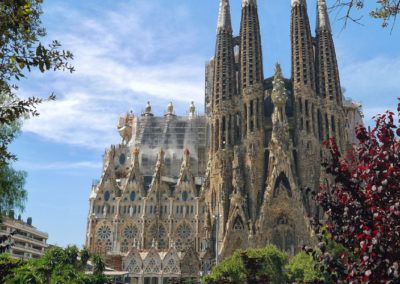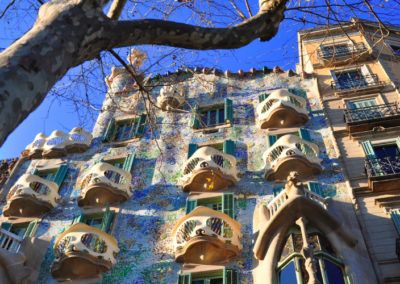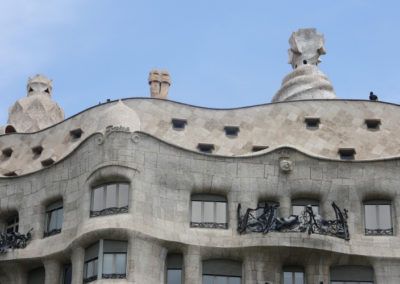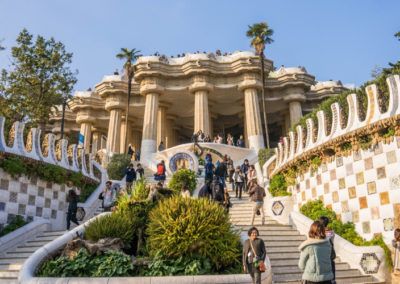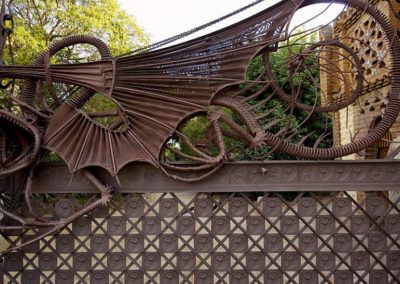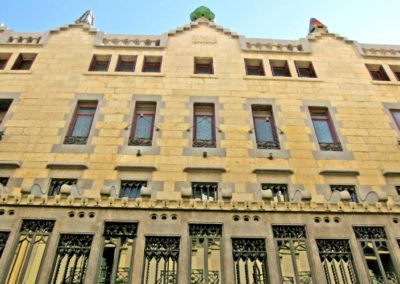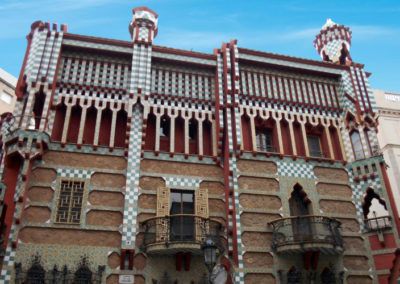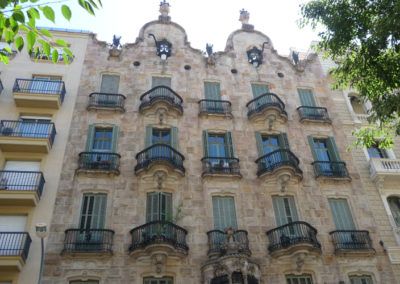If we told you to think of an important symbol of Barcelona, what would you say? We are very clear! Antoni Gaudí is the main symbol of the city of Barcelona, as his works have been, for many, many years, one of the most important tourist attractions in the city! Therefore, if you are thinking of coming to the Center Esplai Hostel and visiting the city of Barcelona and its surroundings, you will surely remember to go and see some of the works of the most famous architect of this city!
In this post we want to provide you with a guide to understand why Antoni Gaudí was so famous and what are the most important works in Barcelona, from the Sagrada Família to La Pedrera, passing by Casa Batlló and many other constructions! Continue reading to see a short biography of Gaudí, his major works and their characteristics.
Let’s see the most famous works of Antoni Gaudí!
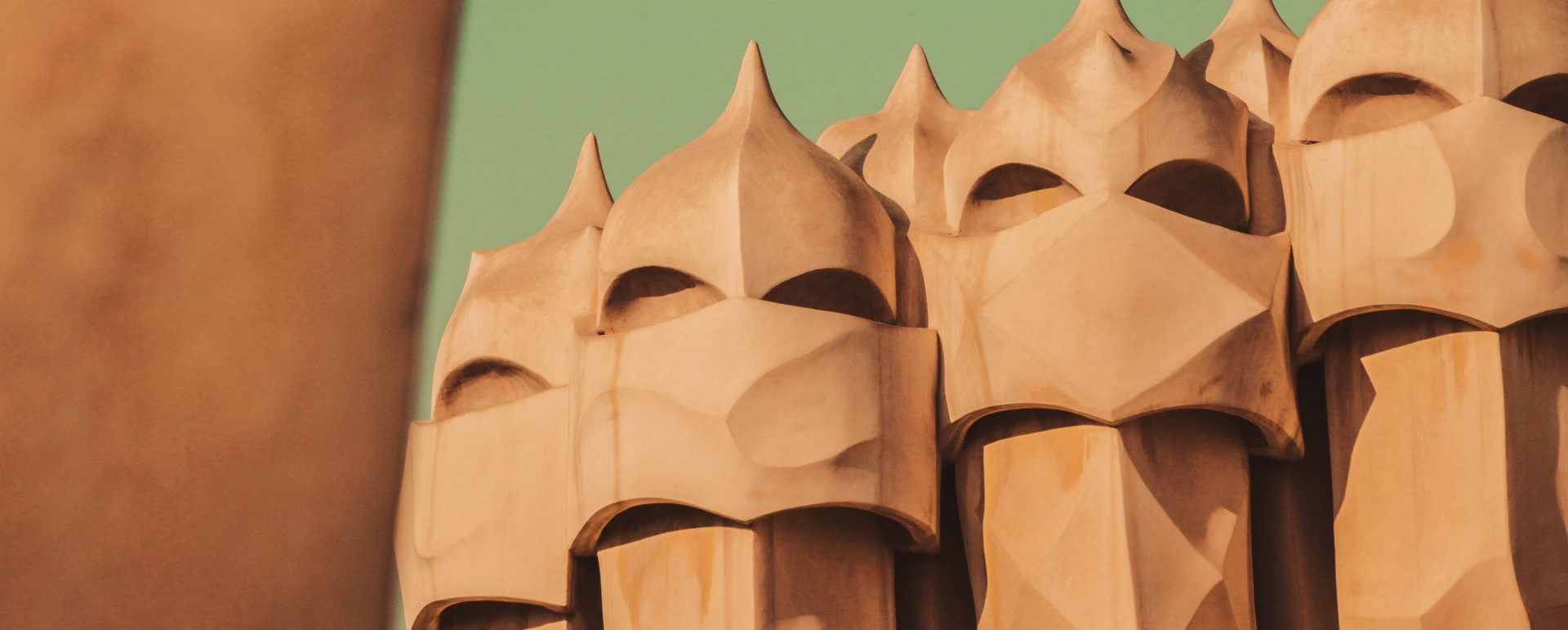

Antoni Gaudí
Antoni Gaudí was born on June 25 1852, in Reus and was a Catalan architect recognized internationally as one of the most prodigious experts in his discipline. Also, one of the greatest exponents of modernism. He came from a family of boilermakers and Antoni Gaudí, when he was little, was already helping his father in the family workshop, which made him acquire an incredible ability to deal with the space and volume of the elements. This ability made him a genius of three-dimensional creation! In 1970 he moved to Barcelona to study architecture, and the rest is history!
1. La Sagrada Família
The Sagrada Família is probably the most popular and famous monument of Antoni Gaudí in Barcelona! Its construction began in 1882 in a neo-Gothic style, but Gaudí decided to completely rethink the concept of the project and designed an innovative temple consisting of 18 towers. However, he only had time to create one of the towers before his death in 1926. The plans for the monument were preserved, and little by little the Sagrada Familia has been erected as the largest monument in the city thanks for donations and visits!
Address: Carrer de Mallorca, 401, 08013 Barcelona.
2. La Casa Batlló
Another of Antoni Gaudí’s most emblematic buildings is the Casa Batlló! From the outside, the façade seems to be made of skulls and bones, which are actually balconies and pillars of the same building. In addition, Gaudí decides to use colors and shapes that are found in marine life. If you decide to go inside, you will see that each space is super special, be careful not to get confused with the furniture and the rooms! Casa Batlló was designed for Josep Batlló, a wealthy aristocrat who wanted a luxury home and lived with his family on the first two floors.
Address: Passeig de Gràcia, 43, 08007 Barcelona.
3. La Pedrera – Casa Milà
During the early twentieth century, the Milanese couple wanted to move their residence to Passeig de Gràcia, which is why they commissioned Antoni Gaudí to build this incredible monument! We often call it La Pedrera, but its popular name was Casa Milà, and it was nothing more than a mockery of the people of Barcelona themselves, who laughed at the extravagant and gloomy look of its façade! Gaudí decides to create very innovative undulating shapes, as he was living his naturalistic stage! We highlight its roof, which has thirty chimneys represented by petrified warriors. Amazing, isn’t it?
Address: Passeig de Gràcia, 92, 08008 Barcelona.
4. El Park Güell
Park Güell owes its name to Eusebi Güell, who was a businessman in love with all the works of Antoni Gaudí. He asked the artist to design a residential building, but the idea changed, and eventually a park was built that looks like a children’s story! This park was inaugurated in 1922 and has all the elements that characterize Gaudí’s work: undulating elements, super-colorful shapes, geometric shapes and many mosaics! There you will find the Gaudí House Museum, a must if you come to visit the park.
Address: Carrer d’Olot, 7, 08024 Barcelona.
5. Els Pavellons Güell
When we talked about Park Güell, we mentioned Eusebi Güell, a businessman and patron of Antoni Gaudí. Well, Eusebi Güell had inherited the lands of Can Feliu and Can Cuyàs, in the area of Les Corts de Sarrià, and wanted to turn them into summer gardens for the family, which were called Pavellons Güell. In fact, this was Gaudí’s first major work! In this work he leaves signs and symbolism very characteristic of his work, such as the arches, the vaults in the parable and the hyperbolic domes.
Address: Avinguda de Pedralbes, 7, 08034 Barcelona.
6. El Palau Güell
That Eusebi Güell was in many of Antoni Gaudí’s works is a constant, and so is the Palau Güell! In this case, Eusebi Güell wanted Gaudí to build an urban palace that would be the extension of his family home on Barcelona’s Rambla. This is what Antoni Gaudí did during his Orientalist period. That is why this work has a great oriental taste, as it is inspired by Hispanic Islamic art, Mudejar art and Nasrid art! Use ceramic tiles, mitral arches, posters, etc.
Address: Carrer Nou de la Rambla, 3-5, 08001 Barcelona.
7. La Casa Vicens
The story of Casa Vicens begins with Mr. Manuel Vicens, a stockbroker who had inherited land from Sant Gervasi Street from his mother. He asked the young Antoni Gaudí to build a house on four levels: underground, ground floor and two floors. Gaudí designed and built the house between 1883 and 1888, and created a work very marked by its Orientalist style, as we mentioned in the previous point. If you decide to visit Casa Vicens, you will find ceramic tiles, mitral arches, posters and brick.
Address: Carrer de les Carolines, 20-26, 08012 Barcelona.
8. La Casa Calvet
Pere Màrtir Calvet was one of the most important figures in the textile industry in Barcelona in the 19th century and decided to commission Antoni Gaudí to create the Casa Calvet. The task was to create a traditional house where he could place his business. He reserved the main floor to create the family home and the basement and basement of the building is where he placed his textile business. It may be one of Gaudí’s most conservative constructions, but it has a lot of ornamental details and a very interesting layout of the spaces!
Address: Carrer de Casp, 48, Barcelona.
What did you think of these works by Antoni Gaudí? Can you tell us which is your favorite? It’s very, very complicated for us, we all love it!



